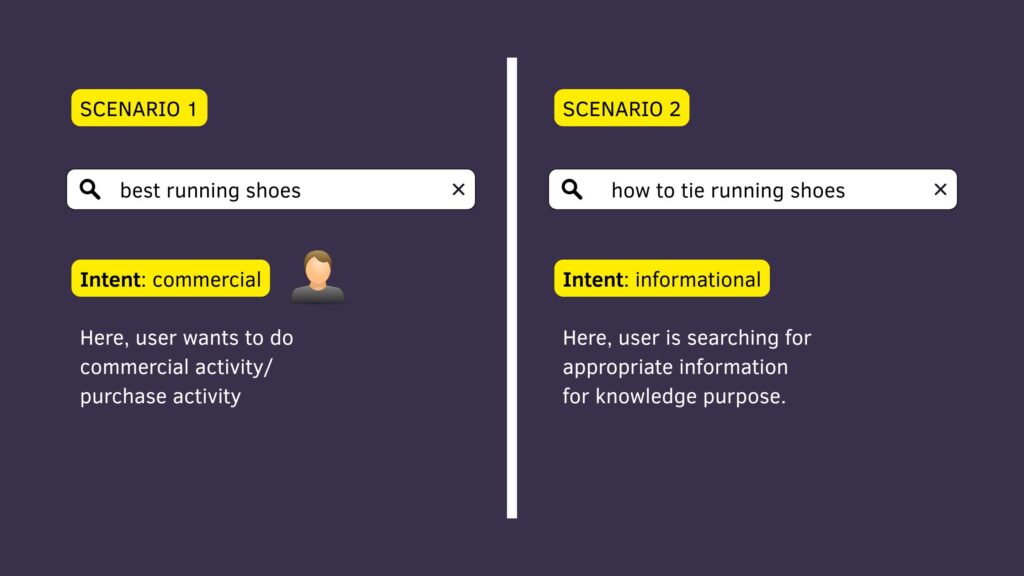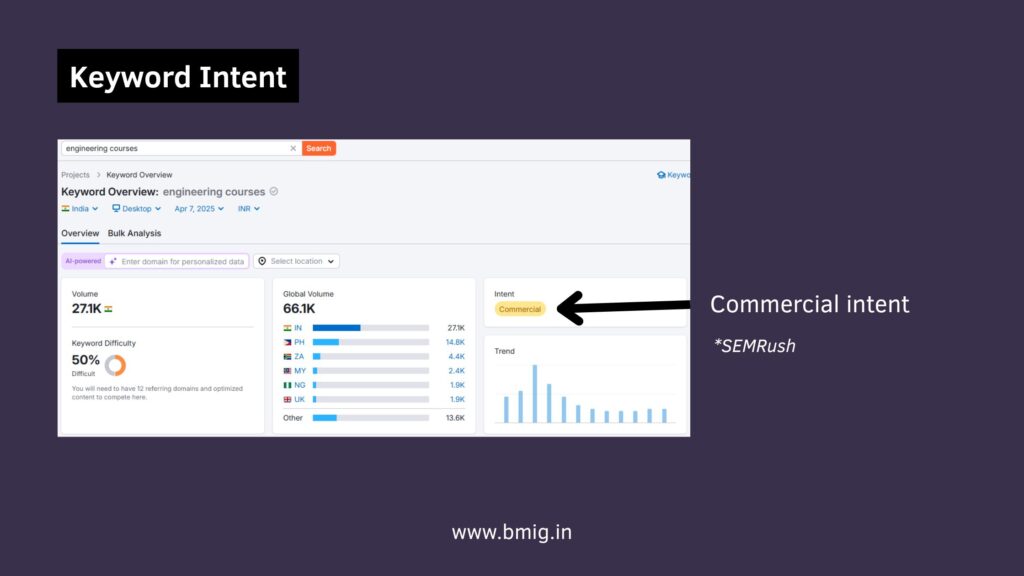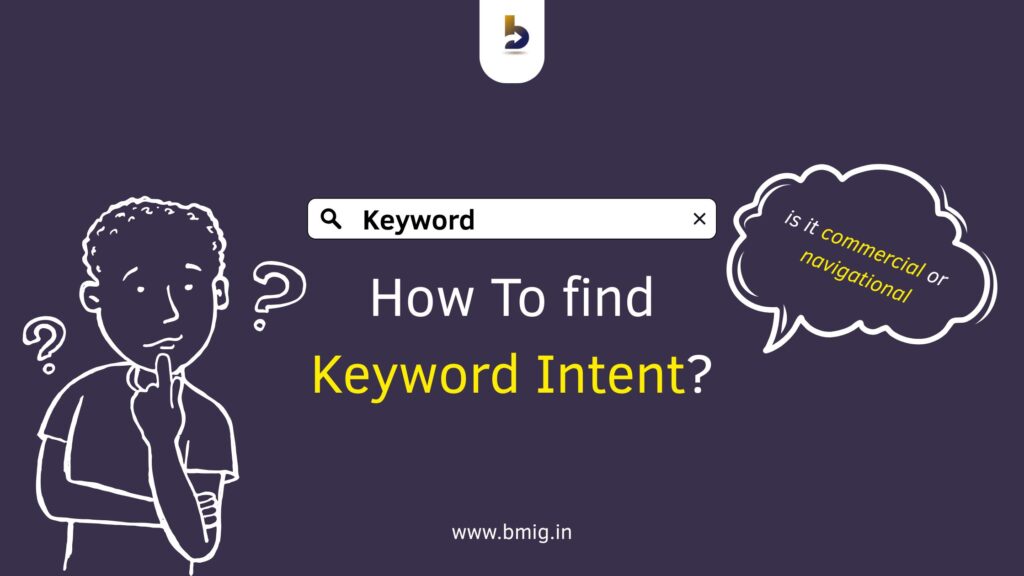Introduction
Keyword intent is the cornerstone of effective SEO. It dictates how well your content aligns with what users truly seek, impacting rankings, engagement, and conversions. By mastering keyword intent, you can create content that satisfies both search engines and users, driving organic traffic and fostering trust. Let’s dive into the nuances of keyword intent and how to leverage it for SEO success.
What is Keyword Intent?
Keyword intent (or search intent) refers to the underlying goal of a user’s search query. It answers the question: Why is this person searching for this term? Search engines prioritize content that matches user intent, making it critical for SEO. For example, a search for “best running shoes” signals commercial investigation, while “how to tie running shoes” reflects informational needs.

Types of Keyword Intent
Understanding the five primary types of keyword intent ensures your content meets user expectations:
| Intent Type | Purpose | Example |
| Informational | Seek knowledge or answers | “How to grow tomatoes” |
| Navigational | Find a specific website/page | “Facebook login” |
| Transactional | Ready to purchase or take action | “Buy iPhone 15 Pro” |
| Commercial | Compare products/services before buying | “Best laptops for gaming” |
| Local | Find nearby businesses/services | “Coffee shops near me” |
Mixed intent occurs when queries overlap categories (e.g., “Apple Watch” could be navigational or transactional). Analyze SERPs to identify dominant intent.
Why Keyword Intent Matters for SEO
- Improved Rankings: Google rewards content that fulfills user needs. Misaligned content risks lower visibility.
- Lower Bounce Rates: Relevant content keeps users engaged, signaling quality to search engines.
- Higher Conversions: Transactional intent content drives purchases, while informational builds trust for future conversions.
- Enhanced User Experience: Content tailored to intent reduces frustration and builds brand loyalty.
Example: A blog titled “How to Care for Succulents” that only lists succulent types fails informational intent, leading to high bounce rates.
How to Determine Keyword Intent
1. Analyze SERPs
- Search your target keyword and study the top 10 results.
- Note content types (blogs, product pages, videos) and SERP features (featured snippets, shopping ads).
- Example: If “wedding decorations” shows product pages, prioritize transactional content over DIY guides.

2. Identify Keyword Modifiers
- Informational: “How,” “guide,” “tips.”
- Transactional: “Buy,” “price,” “deal.”
- Commercial: “Best,” “vs,” “reviews.”
- Local: “Near me,” “open now”.
3. Use SEO Tools
- SEMrush/Ahrefs: Categorize keywords by intent and analyze competitors.
- Google Keyword Planner: Identify search volume and related queries.
- Moz Pro: Evaluate keyword difficulty and intent alignment.

Crafting Content That Aligns With Keyword Intent
1. Match Content Format to Intent
Understanding the type of content that aligns with keyword intent is the first step in creating a successful SEO strategy. Different intents require different content formats, and delivering the wrong format can result in a poor user experience and high bounce rates. By tailoring your content to match the user’s needs—whether they’re looking for information, ready to make a purchase, or comparing options—you establish trust and relevance. Let’s explore how to align content formats with specific intents effectively.
- Informational: Long-form guides, FAQs, videos.
- Transactional: Product pages, pricing tables, CTAs.
- Commercial: Comparison charts, reviews.
- Local: Location-specific landing pages with maps.
2. Optimize On-Page Elements
On-page SEO elements such as title tags, meta descriptions, and headers are critical for signaling relevance to both users and search engines. These elements act as the first impression of your content in search results, influencing click-through rates and engagement. Optimizing them not only helps you rank higher but also ensures that users immediately recognize your content as a solution to their query. Here’s how to craft on-page elements that perfectly align with keyword intent.
- Title Tags: Include primary keyword and intent (e.g., “10 Best Running Shoes of 2025 [Expert Reviews]”).
- Meta Descriptions: Highlight value (e.g., “Learn how to grow tomatoes with step-by-step tips”).
- Headers (H2-H4): Structure content for skimmability (e.g., “Types of Succulents,” “Care Tips”).
3. Enhance Readability
Even the most well-researched content can fail if it’s not easy to read or navigate. Users want quick access to information without wading through walls of text. Enhancing readability involves structuring your content for skimmability, using visuals, and incorporating tools like schema markup for better presentation in search results. By focusing on readability, you create a seamless user experience that keeps visitors engaged and improves your SEO performance.
These introductory paragraphs add context and set the stage for each section, making the article more engaging and informative.
- Add schema markup for FAQs or product specs to boost rich snippets.
- Use bullet points, short paragraphs, and transition words.
Common Keyword Intent Mistakes
- Ignoring SERP Analysis: Creating blog posts when product pages dominate results.
- Overlooking Long-Tail Keywords: These often reveal specific intent (e.g., “men’s running shoes for flat feet”).
- Mismatched CTAs: Adding “Buy Now” buttons to informational content confuses users.
- Stale Content: Not updating pages as intent evolves (e.g., “iPhone 13 reviews” in 2025).
Conclusion
Keyword intent bridges the gap between user needs and content strategy. By analyzing SERPs, leveraging tools, and aligning content formats, you can create SEO-friendly content that ranks well and resonates with audiences. Regularly audit your content to ensure it adapts to shifting intent, and prioritize user experience at every stage.
FAQs
Q: How do I handle mixed intent keywords?
A: Check if top SERP results blend formats (e.g., blogs and product pages). Create hybrid content or prioritize dominant intent.
Q: Which tools best identify keyword intent?
A: SEMrush, Ahrefs, and Google Keyword Planner offer intent categorization and SERP insights.
Q: Can a single page target multiple intents?
A: Use anchor links to segment sections (e.g., “Buying Guide” and “Product Specs”) for clarity.

